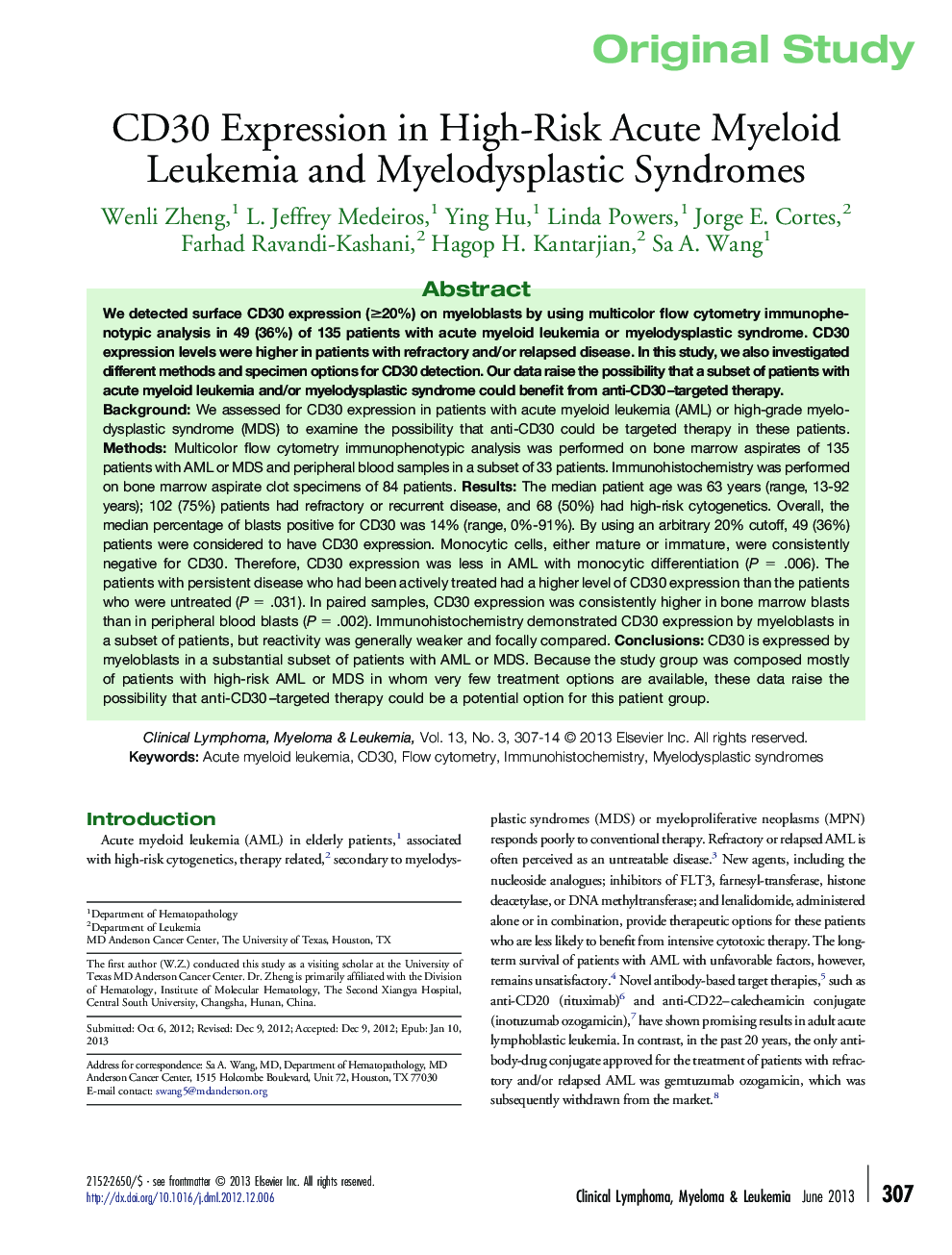| Article ID | Journal | Published Year | Pages | File Type |
|---|---|---|---|---|
| 2754791 | Clinical Lymphoma Myeloma and Leukemia | 2013 | 8 Pages |
BackgroundWe assessed for CD30 expression in patients with acute myeloid leukemia (AML) or high-grade myelodysplastic syndrome (MDS) to examine the possibility that anti-CD30 could be targeted therapy in these patients.MethodsMulticolor flow cytometry immunophenotypic analysis was performed on bone marrow aspirates of 135 patients with AML or MDS and peripheral blood samples in a subset of 33 patients. Immunohistochemistry was performed on bone marrow aspirate clot specimens of 84 patients.ResultsThe median patient age was 63 years (range, 13-92 years); 102 (75%) patients had refractory or recurrent disease, and 68 (50%) had high-risk cytogenetics. Overall, the median percentage of blasts positive for CD30 was 14% (range, 0%-91%). By using an arbitrary 20% cutoff, 49 (36%) patients were considered to have CD30 expression. Monocytic cells, either mature or immature, were consistently negative for CD30. Therefore, CD30 expression was less in AML with monocytic differentiation (P = .006). The patients with persistent disease who had been actively treated had a higher level of CD30 expression than the patients who were untreated (P = .031). In paired samples, CD30 expression was consistently higher in bone marrow blasts than in peripheral blood blasts (P = .002). Immunohistochemistry demonstrated CD30 expression by myeloblasts in a subset of patients, but reactivity was generally weaker and focally compared.ConclusionsCD30 is expressed by myeloblasts in a substantial subset of patients with AML or MDS. Because the study group was composed mostly of patients with high-risk AML or MDS in whom very few treatment options are available, these data raise the possibility that anti-CD30–targeted therapy could be a potential option for this patient group.
